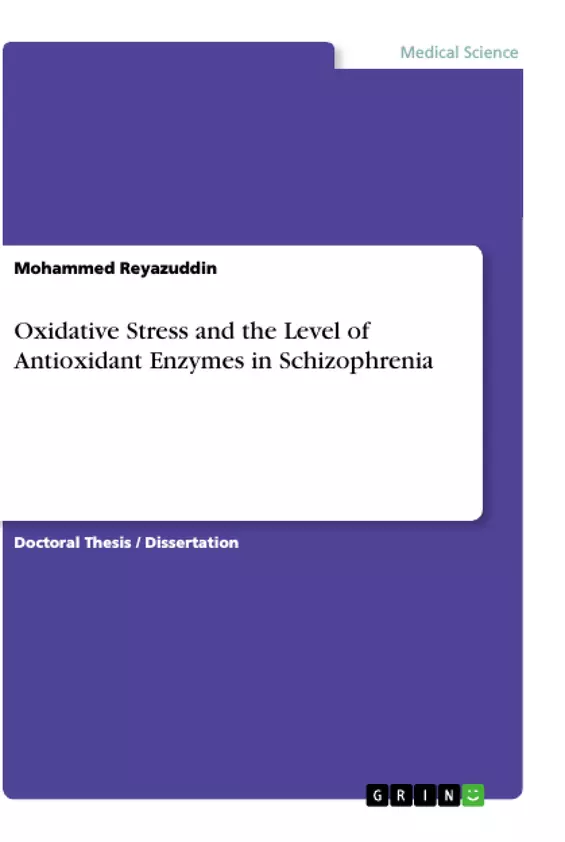Schizophrenia is a clinical syndrome of variable, but profoundly disruptive, psychopathology that involves cognition, emotion, perception, and other aspects of behavior. The disorder usu-ally begins before age 25, persists throughout life, and affects persons of all social classes. In the United States, the lifetime prevalence of schizophrenia is about 1 percent, which means that about 1 person in 100 will develop schizophrenia during their lifetime. The prevalence of schizophrenia in India is 2.5/1000 as reported by Ganguli in 2000 and 2.7/1000 by Reddy et al. in 1998.
A growing body of evidence suggests that peripheral activities of antioxidant enzymes and lipid peroxidation are abnormal in schizophrenic subjects. Mahadik found increased lipid pe-roxidation products and altered defence system in both chronic and drug-naive first episode schizophrenics. The accumulated results indicate that oxidative stress is integral to this disease and not the result of neuroleptic treatment.
Inhaltsverzeichnis (Table of Contents)
- Introduction
- Review of Literature
- Materials and Methods
- Subjects
- Inclusion and Exclusion criteria
- Clinical Assessment
- Blood Sample Collection
- Biochemical Analysis
- Statistical Analysis
- Results
- Discussion
- Summary and Conclusion
- Bibliography
Zielsetzung und Themenschwerpunkte (Objectives and Key Themes)
This thesis aims to investigate the role of oxidative stress and the levels of antioxidant enzymes in the development and progression of schizophrenia. By examining these factors, the study seeks to contribute to a better understanding of the underlying pathophysiological mechanisms of this complex psychiatric disorder.
- Oxidative stress and its role in schizophrenia
- Levels of antioxidant enzymes in patients with schizophrenia
- Relationship between oxidative stress and antioxidant enzyme activity in schizophrenia
- Potential implications for treatment and management of schizophrenia
Zusammenfassung der Kapitel (Chapter Summaries)
- Introduction: This chapter provides a comprehensive overview of schizophrenia, its clinical presentation, epidemiology, and current understanding of its pathophysiology. It introduces the concept of oxidative stress and its potential role in the development of the disorder.
- Review of Literature: This chapter reviews existing research on oxidative stress and antioxidant enzyme activity in schizophrenia. It examines previous studies, highlighting key findings and gaps in knowledge.
- Materials and Methods: This chapter details the study design, subject recruitment, clinical assessment procedures, blood sample collection methods, biochemical analysis techniques, and statistical analysis approaches used in the research.
- Results: This chapter presents the findings of the study, including descriptive statistics, comparisons between groups, and correlations between variables.
- Discussion: This chapter interprets the findings in relation to existing literature and explores the implications of the results for understanding the pathophysiology of schizophrenia.
Schlüsselwörter (Keywords)
The main keywords and focus topics of this thesis are: schizophrenia, oxidative stress, antioxidant enzymes, biochemical analysis, pathophysiology, treatment.
- Quote paper
- Mohammed Reyazuddin (Author), 2012, Oxidative Stress and the Level of Antioxidant Enzymes in Schizophrenia, Munich, GRIN Verlag, https://www.grin.com/document/913268



